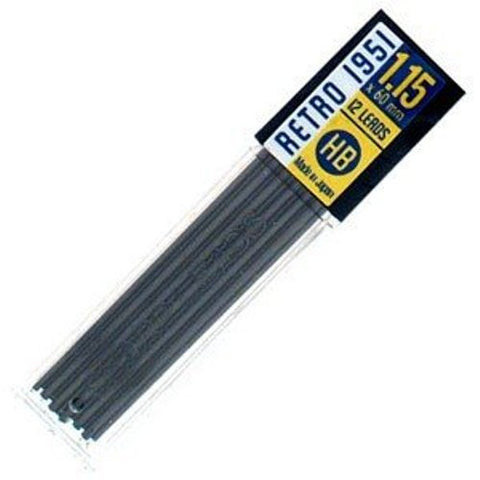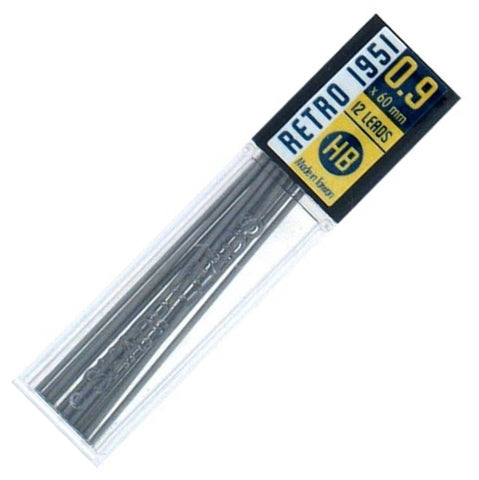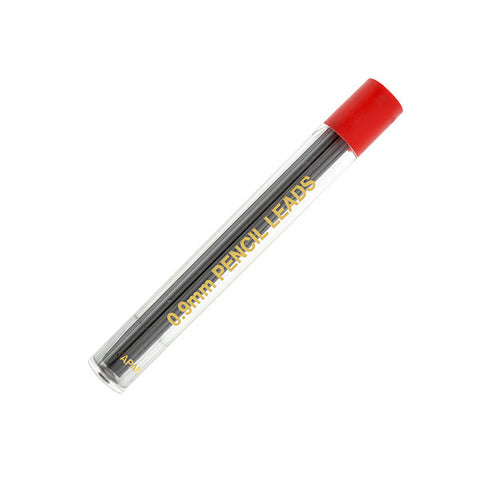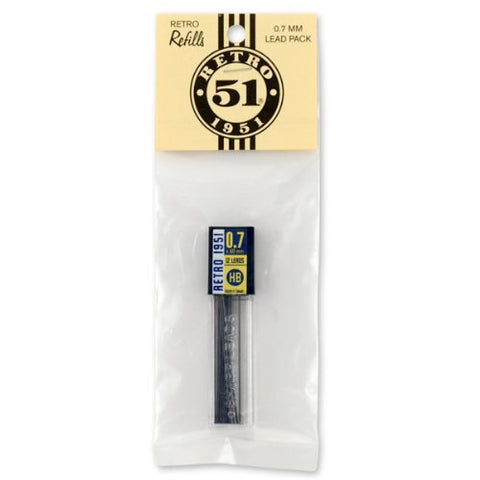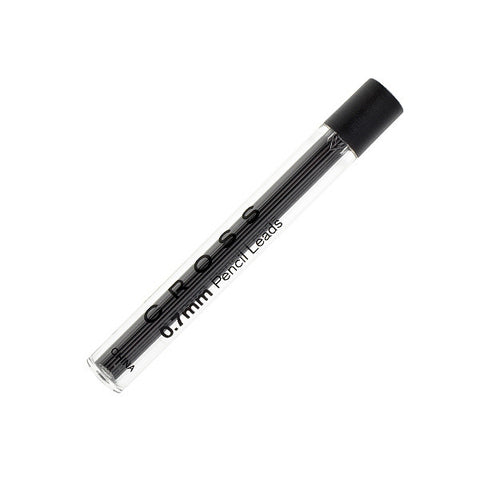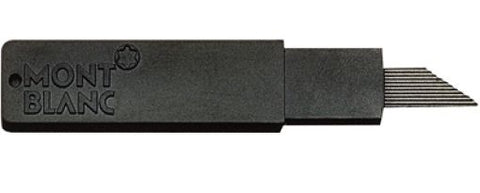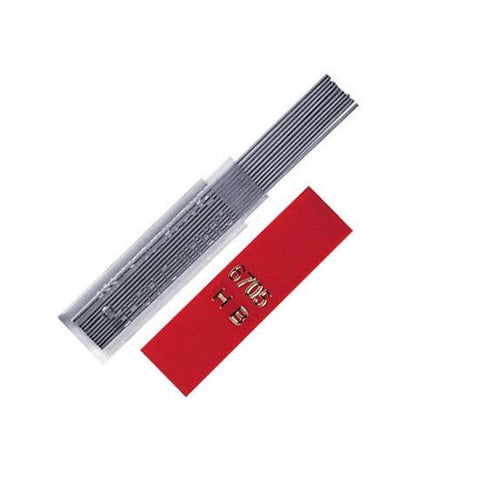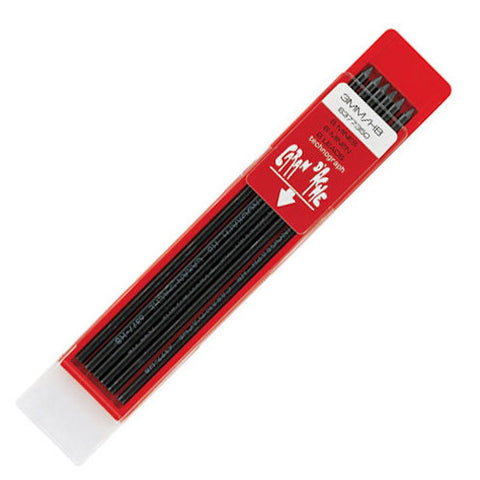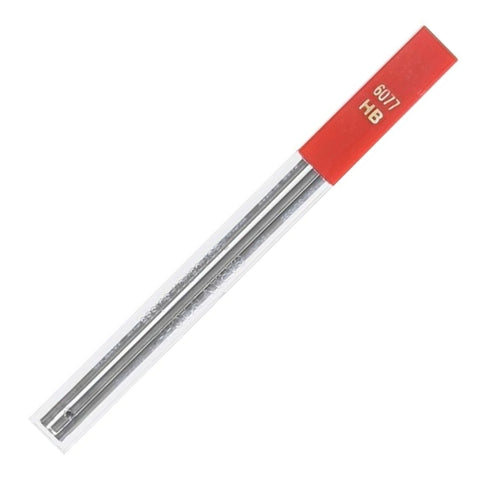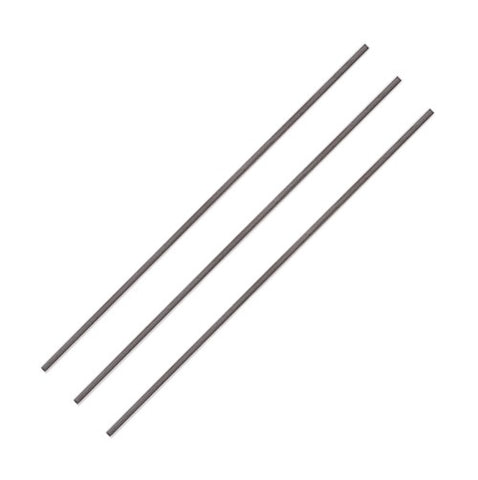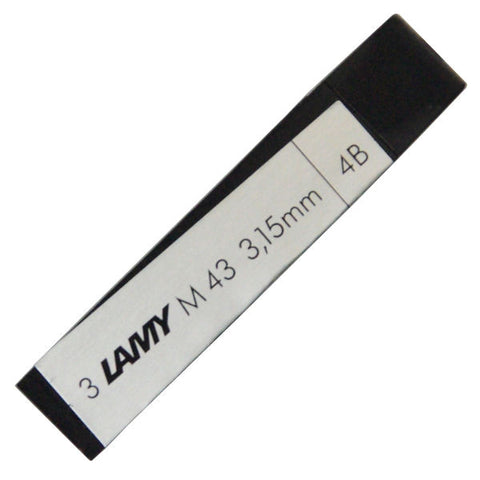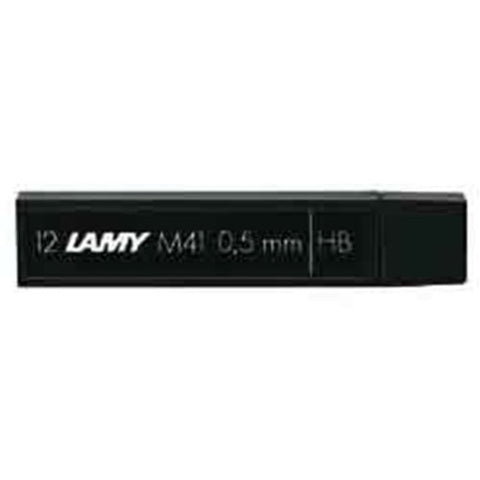Pencil Lead
Are you in the market for a new pencil lead but need help determining what to look for? Look no further than RefillFinder for all your pencil lead needs.
In this article, we will explore the different types of pencil lead, factors to consider before purchasing, and the benefits and drawbacks of using pencil lead. Whether you are a student, artist, or professional, understanding the ins and outs of pencil lead will help you decide on your next purchase.
What Is Pencil Lead?
Pencil lead is a core component of a pencil that is used for writing or drawing on paper. It is made of a mixture of graphite and clay, which gives it the necessary properties to leave a mark on surfaces.
Along with its traditional use in pencils, pencil lead is utilized in other writing instruments, such as mechanical and drafting pencils.
The graded scale of pencil lead hardness, ranging from soft to hard, allows for varying line thickness and shading techniques, catering to the diverse needs of artists, designers, and writers. From intricate sketches to precise technical drawings, the versatility of pencil lead makes it an essential tool in the creative and professional realm.
Its durable composition ensures it remains intact while creating smooth lines for outlining, shading, or writing.
What Are The Different Types Of Pencil Lead?
Several distinct types of pencil lead are available, each catering to different needs and preferences. These include graphite lead, colored lead, and mechanical pencil lead, offering diverse options for writing, sketching, or drawing.
Graphite lead is the most common type and is renowned for its smooth and versatile application. It comes in varying degrees of hardness, from soft to hard, catering to different marks and lines.
Colored lead, on the other hand, offers a vibrant spectrum of hues, perfect for artistic works and adding flair to writing. Mechanical pencil lead provides precision and eliminates the need for frequent sharpening, making it ideal for technical drawings and precise drafting work.
Graphite Lead
Graphite lead is one of the most common and popular types of pencil lead, widely used by artists and writers for its smooth and versatile application. It is available in different hardness levels, providing varying degrees of darkness and precision for drawing or writing.
This versatility makes it a favorite choice among creators, allowing them to achieve bold strokes and fine details with the same tool.
The smooth texture of graphite lead glides effortlessly across the paper, leaving a consistent and professional finish. Its erasable nature also appeals to artists and writers, allowing them to correct mistakes without compromising the overall quality of their work.
Graphite lead is favored for its ability to be easily blended, allowing for seamless transitions and shading in artwork.
Colored Lead
Colored lead pencils offer diverse hues and shades, making them an essential art supply for creating vibrant and expressive drawings. Artists and enthusiasts often use colored lead pencils to add depth and visual appeal to their artwork.
These pencils come in various colors, including vibrant shades like crimson, emerald, and sapphire, allowing artists to depict a wide array of subjects accurately and creatively.
Colored lead pencils provide versatility in application, enabling artists to layer and blend colors seamlessly, enhancing the overall effect of their creations.
Mechanical Pencil Lead
Mechanical pencil lead eliminates the need for sharpening and frequent replacement, offering a convenient and reliable writing or drawing tool. Mechanical pencils provide an efficient and sustainable writing solution with various refill options and lead sizes.
The refillable nature of mechanical pencil lead allows continuous use without interruption, promoting a seamless writing or drawing experience.
The availability of different lead sizes caters to diverse preferences and applications, whether precise technical drawings or bold artwork. This versatility makes mechanical pencils ideal for artists, engineers, students, and professionals.
What Are The Factors To Consider Before Purchasing Pencil Lead?
Before purchasing a pencil lead, it is essential to consider factors such as lead hardness, size, quality, brand, and price to ensure that it aligns with the specific writing or drawing requirements and preferences.
Lead hardness is critical, as it determines the darkness or lightness of the lines produced. For intricate detailing, a harder lead with a higher 'H' rating is preferred, while for shading and sketching, softer leads with a higher 'B' rating are more suitable.
Size options also play a key role, with standard sizes such as 0.5mm and 0.7mm being widely used, but larger sizes like 2.0mm also having their specific applications.
Quality considerations encompass smoothness, break resistance, and evenness of the lines. It's vital to prioritize quality to avoid lead breakage or inconsistent line intensity.
Brand preferences vary among users, with renowned brands often offering consistent quality and wider lead options. Some may find value in lesser-known brands offering unique characteristics.
Price variations reflect the quality and brand, with premium leads offering superior performance but at a higher cost, while budget-friendly options may fulfill basic needs.
Pencil Lead Hardness
The hardness of pencil lead is denoted by a number, indicating its darkness and durability. Understanding the differences in hardness levels allows users to select the most suitable lead for their drawing or writing needs.
Regarding pencil lead, its hardness is typically represented by a number. This hardness affects the darkness and durability of the line it creates. Higher numbers, like 2H or 4H, produce lighter lines perfect for technical drawing. On the other hand, lower numbers, such as 2B or 4B, result in darker, richer lines ideal for shading and sketching. The scale ranges from 9H, the hardest and lightest, to 9B, the softest and darkest, allowing users to find the perfect balance for their artistic or writing needs.
Pencil Lead Size
Pencil lead comes in various sizes and types, including traditional wooden and mechanical pencils with refillable leads. Considering the size and type of lead is crucial to ensure compatibility with the chosen writing or drawing instrument.
Traditional wooden pencil leads typically come in standard sizes such as HB, B, or 2B, each offering different hardness levels.
On the other hand, mechanical pencil leads come in a wider range of sizes, from 0.3mm to 2.0mm, allowing for more precision in writing and drawing. The selection of lead size also affects the line thickness and the overall experience of using the pencil, making it an important consideration for artists, designers, and writers alike.
Pencil Lead Quality
The quality of pencil lead directly impacts the writing or drawing experience, influencing smoothness and durability. Comparing and evaluating the material composition and performance of the lead is essential when considering its quality.
Regarding pencil lead, the material composition is vital in determining its quality. For instance, graphite leads are known for their smoothness, making them ideal for creating precise lines and shading.
On the other hand, leads with a higher percentage of clay exhibit greater durability, minimizing breakage during use. The performance aspects of pencil leads further illustrate their differences in quality. High-quality leads offer consistent, reliable performance, allowing for effortless writing or drawing without frequent sharpening.
In contrast, lower-quality leads may be prone to smudging, inconsistent lines, and unexpected breakage, resulting in a frustrating experience for the user.
Pencil Lead Brand
The choice of pencil lead brand can influence the overall writing or drawing experience, with certain brands favored by artists and writers for their consistent performance and quality. Comparing popular brands allows users to make informed decisions based on their preferences.
For instance, renowned brands like Staedtler are highly regarded for their smooth and durable leads, perfect for sketching intricate details or writing for extended periods.
On the other hand, Faber-Castell pencils offer a wide range of lead grades, catering to various artistic styles and preferences.
Meanwhile, Pentel is known for its sturdy and break-resistant leads, making them ideal for precise technical drawings and drafting.
Pencil Lead Price
The price of pencil lead is important for budget-conscious consumers as it determines the overall cost of writing or drawing supplies.
Evaluating the price relative to lead quantity and quality helps users make cost-effective choices.
It's essential to weigh the upfront cost against the longevity and performance of the lead, as a higher-quality lead may offer smoother writing and require less frequent replacement, leading to long-term savings.
What Are The Benefits Of Buying Pencil Lead?
Buying a pencil lead offers several benefits, including versatility in writing or drawing, durability for long-term use, precision in creating fine details, consistency in performance, and ease of use for various applications.
Whether an artist, designer, student, or professional, pencil lead allows you to effortlessly switch between different grades and thicknesses to suit your needs. Its ability to produce smooth, consistent lines without easily breaking or smudging makes it a reliable tool for intricate sketches, technical drawings, or everyday writing tasks.
With technological advancements, many pencil lead formulations offer improved break resistance, reduced friction, and extended lifespan, ensuring that your investment lasts longer and delivers reliable performance throughout its usage. Whether for drafting, shading, note-taking, or creative illustrations, the pencil lead is an essential accessory for anyone seeking quality and convenience in their writing or drawing endeavors.
Versatility
Pencil lead's versatility allows it to be used for writing, sketching, or detailed drawing, making it a valuable tool for artists, writers, and enthusiasts seeking a single supply for multiple applications.
Whether it's the precision required for technical drawings or the smooth flow needed for calligraphy, pencil lead accommodates a wide range of artistic and professional needs.
Its adaptability extends to various paper surfaces, from rough textures to smooth sheets, allowing for seamless expression. The portable nature of pencil lead makes it a convenient choice for creatives on the go, providing the flexibility to capture ideas and inspirations at any moment.
Durability
The durability of pencil lead ensures its integrity and performance over time, providing users with a reliable and long-lasting writing or drawing solution. Refillable options further enhance the sustainability of pencil lead usage.
Pencil lead, known for its steadfastness in maintaining quality, is a testament to its enduring nature. This dependability allows for consistent and uninterrupted usage, making it a favored tool by artists, students, and professionals.
With refillable options readily available, the longevity of pencil lead is amplified, reducing the need for frequent replacements and minimizing waste. This encourages economic benefits and aligns with eco-conscious practices, making it an appealing choice for those conscious of sustainable living.
Precision
Pencil lead enables precision in fine lines, shading, or intricate details, making it a preferred choice for artists and designers seeking control and accuracy in their drawing or sketching endeavors.
With its fine point and smooth texture, pencil lead allows artists to vary the line thickness, achieving delicate strokes and bold outlines.
Controlling the pressure and angle when using pencil lead enables artists to create nuanced shading, adding depth and dimension to their sketches. The consistent flow of graphite from the lead ensures that even the most intricate details can be rendered effortlessly, contributing to the meticulous nature of the artwork.
Consistency
Pencil lead delivers consistent performance and smooth lines, ensuring the writing or drawing experience remains uniform and reliable across different surfaces and artistic expressions.
This reliability makes it a preferred choice for artists, designers, and writers alike, as they can confidently produce their work without unexpected interruptions or inconsistencies.
Whether it's creating intricate sketches, drafting precise technical drawings, or jotting down notes, the consistency of pencil lead brings a sense of reliability and control to the creative process. The ability of pencils to seamlessly glide over paper, canvas, or other surfaces adds to the versatility and appeal of this essential tool in the world of art and writing.
Easy to Use
Pencil lead's user-friendly nature makes it accessible and convenient for artists and enthusiasts, as it can be easily employed for various drawing techniques and styles without requiring complex setup or maintenance.
Artistic creativity flows effortlessly when using pencil lead, as its smooth application and versatility allow for seamless transitions between different creative expressions. Its simple yet effective design ensures that artists can focus on their craft without the distraction of intricate tool maintenance.
Whether sketching, shading, or detailing, pencil lead provides a reliable and consistent medium for artistic exploration and expression. The accessibility and durability of pencil lead make it a timeless choice for seasoned professionals and budding artists.
What Are The Drawbacks Of Buying Pencil Lead?
While purchasing pencil lead offers numerous benefits, certain drawbacks include limited color options, the need for regular sharpening, potential breakage, and the possibility of creating messes during use.
Regarding color options, pencil lead typically comes in standard graphite shades, limiting the creative freedom in artistic projects. The maintenance required for sharpening the lead can be time-consuming, especially for frequent users.
The fragile nature of pencil lead makes it susceptible to breakage, leading to potential interruptions in workflow. Additionally, using pencil lead can result in accidental smudges and smears, creating a messy workspace, especially with less forgiving paper types. Users must be mindful of these drawbacks when considering pencil lead as their writing or drawing tool.
Limited Colors
The limited color palette of traditional pencil lead may pose challenges for artists seeking a broader spectrum of hues and shades in their drawings, prompting additional coloring tools or mediums.
Along with the limited colors available in pencil lead, artists may need help to achieve certain tones or vibrancy. This can be especially challenging when depicting complex scenes or conveying specific emotions through color.
As a result, many artists explore using colored pencils, watercolor pencils, or other mediums to expand their options and create more diverse and impactful compositions. By integrating these alternative tools into their artistic practice, creators can overcome the constraints of limited pencil lead colors and unlock the full potential of their visual storytelling.
Requires Sharpening
The necessity of sharpening traditional pencil lead regularly can be perceived as a drawback, especially when working on detailed or extensive drawings, as it requires interruptions and may contribute to waste during the sharpening process.
Regular sharpening of pencil lead is crucial to maintain a consistent and precise line quality, which is imperative for artists, architects, and designers.
The constant need to pause and sharpen the pencil can disrupt the creative flow, leading to a loss of focus and momentum. The frequent sharpening can result in wasted lead, reducing the lifespan of the pencil and requiring more frequent replacements. This impacts the drawing workflow and introduces an element of inefficiency and cost.
Potential Breakage
Pencil lead's susceptibility to breakage, particularly in traditional wooden pencils, can disrupt the drawing process and lead to material wastage, necessitating careful handling and potentially impacting the user's experience.
Artists and creators often struggle to maintain a consistent flow when their pencil lead keeps snapping. This not only interrupts their artistic rhythm but also results in the loss of valuable material and affects the overall efficiency of the drawing process. It can lead to frustration and hinder the expression of creative ideas.
Effective management of the fragile pencil lead is crucial to ensure a seamless drawing experience and minimize the disruption caused by lead breakage.
Can Be Messy
Using pencil lead may result in accidental smudges, smears, or residual marks on surfaces, leading to potential messiness during drawing activities, which may require additional cleanup and affect the overall presentation of artwork.
Accidental smudges and smears can create a messy and unprofessional appearance for the artwork, especially when attempting to achieve clean, precise lines and shading.
Artists often need help to maintain the cleanliness of their drawings, as erasing smudges can often leave residual marks or damage the paper surface. Dealing with the aftermath of pencil lead smudges requires delicate touch-ups, and this process's time-consuming nature can hinder the creative process's smooth flow.
Buy Your Pencil Lead at RefillFinder
RefillFinder offers a wide selection of high-quality pencil lead options for all your pencil lead needs, ensuring that you can find the perfect supplies for your writing, drawing, or artistic pursuits.
Whether you prefer traditional graphite or are looking for innovative colored leads, RefillFinder has it all. You'll be sure to discover the ideal match for your pencils from various lead grades to different diameters.
The convenience of browsing through a diverse range of pencil leads under one roof adds to the appeal of RefillFinder. The superior quality of the leads ensures smooth, reliable performance, making every stroke a pleasure.
Frequently Asked Questions
Should You Buy Pencil Lead?
Buying pencil lead is necessary if you use pencils regularly in school, at work, or for personal use.
What types of pencil lead are available?
Various types of pencil lead are available, including traditional graphite, colored, and mechanical.
Is it better to buy traditional graphite or mechanical pencil lead?
This ultimately depends on personal preference and intended use. Traditional graphite is typically cheaper and allows for more precision, while mechanical pencil lead is convenient and has a constantly sharp point.
How often should pencil lead be replaced?
The frequency of replacing pencil lead depends on usage, but as a general rule, it's recommended to replace it every few weeks or whenever it becomes dull or breaks easily.
Are there any eco-friendly options for pencil lead?
There are eco-friendly options for pencil lead made from recycled or sustainably sourced materials. Be sure to check the packaging or brand description for more information.
Back to Top: Pencil Lead

